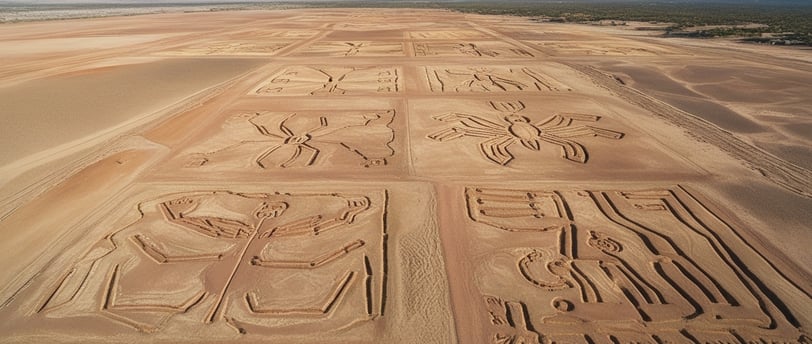Exploring the Nazca Lines: Latest Research and Museums
Javier Fernández
10/29/20243 min leer


Exploring the Nazca Lines: Latest Research and Museums
The Nazca Lines, a monumental enigma etched in the Peruvian desert, have fascinated researchers and visitors since their discovery. These geoglyphs, which span over 500 km² in southern Peru, are a cultural manifestation of the Nazca civilization, which inhabited the region between 200 BCE and 600 CE. In this blog, we will explore the latest research on the Nazca Lines, as well as the significance of museums in Nazca and Lima that house artifacts and knowledge about this astonishing legacy.
Discovery of the Nazca Lines
The Nazca Lines were discovered in the 1920s by Peruvian archaeologist Toribio Mejía Xesspe, who observed the figures from an airplane. However, it was Paul Kosok, an American archaeologist, who popularized their study in 1939 by flying over the region and realizing the magnitude and complexity of the geoglyphs. Kosok suggested that these lines might have an astronomical purpose, sparking interest in their study and preservation.
Attractive Figures of the Nazca Lines
Among the various figures etched in the desert, some stand out for their uniqueness and appeal:
The Hummingbird: This figure, measuring approximately 100 meters long, is one of the most recognizable. Its stylized design and extended wings evoke a natural beauty that has captured many imaginations.
The Spider: With its elongated legs, this 46-meter figure is an intriguing representation that has been subject to various interpretations. Some researchers suggest it may be related to fertility, as the spider symbolizes life in some cultures.
The Monkey: This geoglyph, 28 meters in size, features a complex design with a curled tail and details on its body. It is believed to symbolize one of the important deities in Nazca cosmology.
The Dog: This 50-meter design stands out for its stylized shape and friendly expression. It is considered a symbol of companionship and protection.
The Colibri: This figure is one of the largest and most complex, representing the famous Andean hummingbird. Its precision and detail have fascinated researchers.
The theories regarding the purpose of these figures are varied. Some suggest they could have been part of cult rituals or used as ceremonial pathways, while others believe they had an astronomical significance.
Latest Research on the Nazca Lines
Recently, research on the Nazca Lines has taken an exciting turn thanks to modern technology. In 2020, a team of archaeologists from Yamagata University in Japan discovered new figures in the Nazca area using drones and photogrammetry techniques. This approach has allowed them to identify geoglyphs that were not visible from the ground, revealing more than 140 new designs, including animal figures and geometric shapes.
One of the most intriguing theories regarding the purpose of the lines is their connection to astronomical rituals. Research conducted in 2021 suggested that some figures might align with significant astronomical events, such as solstices and equinoxes. These revelations add a layer of meaning to the lines, suggesting they were part of a complex system of beliefs and ceremonial practices.
Museums in Nazca and Lima
For those interested in delving into the history and culture of the Nazca Lines, museums are essential stops.
Antonini Archaeological Museum (Nazca): This museum houses a rich collection of artifacts from the Nazca culture, including pottery, textiles, and tools. The exhibits also provide information on recent archaeological research, offering vital context about the meaning of the Nazca Lines.
National Museum of Archaeology, Anthropology, and History of Peru (Lima): This museum is one of the most important in the country and features an extensive collection of pieces from various pre-Columbian cultures, including the Nazca civilization. Its exhibits on Nazca art and daily life provide a deep insight into their world.
Museum of Natural History (Lima): While not exclusively focused on Nazca, this museum offers exhibits on Peru's biodiversity, including information about ancient civilizations and their interactions with the environment. The lines and geoglyphs can be explored in the context of the relationships of ancient cultures with nature.
Conclusions
The Nazca Lines remain a captivating phenomenon, and recent research has provided new perspectives on their meaning and purpose. The museums in Nazca and Lima are treasures of knowledge that allow visitors to explore the rich cultural heritage of this region. As new technologies are developed and research continues, the mystery of the Nazca Lines keeps revealing itself, inviting everyone to discover its enigmatic legacy. If you have the opportunity to visit Peru, don’t miss the chance to marvel at these archaeological wonders and explore their history through the museums that celebrate their rich cultural heritage.
